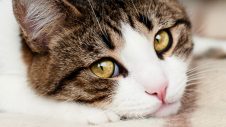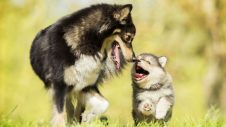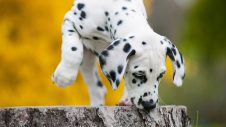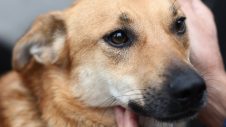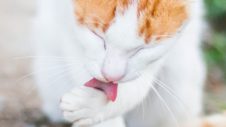Ringworm in dogs and cats is a skin condition that requires immediate attention, as it can be transmitted to humans. Here’s everything you need to know about ringworm, including signs and symptoms, how to treat it and how to prevent it in the future.
What is Ringworm?
Ringworm is a fungal infection of the outer layers of the skin, hair and nails. Ringworm on dogs and cats is very contagious and is categorised as a zoonotic disease, meaning that it can be transmitted to humans. The name itself can often cause confusion, as it is not caused by a worm, and the lesions themselves are not always ring-shaped.
How is ringworm transmitted?
The ringworm fungus lives in the soil as well as on infected animals and humans. You and your pets are at risk of contracting ringworm from direct contact with other infected pets and environments. The infection is transmitted by fungal spores that are shed on hair and skin cells that can survive for months – especially when it’s hot and humid.
The fungal spores may remain dormant on combs, brushes, food bowls, furniture, bedding, carpet, or other environmental surfaces for up to 18 months
Ringworm poses greater risks to younger and older people and pets, as well as those with a weaker immune system. Long-haired cats are also at greater risk as the fungus gets trapped in their hair and is harder to remove. If you have adopted your pet from a shelter, they may have been exposed to the fungus, which is why looking for ringworm symptoms before they come home with you is wise.
Ringworm symptoms: what does ringworm look like on dogs and cats?
Ringworm on dogs and cats is often characterised by a circular patch of hair loss with “scaling” of the skin that appears inflamed. The area of infection can often appear as a red “ring”, but it’s not always circular. It can be isolated to one area, or it can be more generalised affecting more of the body.
The patches of ringworm are not usually itchy, while the hair follicles will become brittle and break easily. Feline ringworm can be particularly nasty as cats can become carriers without showing any other signs of infection. If you notice any signs of ringworm on your pet, make an appointment with your local Greencross Vets as soon as possible.
How is ringworm diagnosed?
In addition to reviewing your pet’s symptoms, your vet will diagnose ringworm via a couple of approaches.
They may use an ultraviolet light, called a Wood’s lamp as some varieties of ringworm fungus will fluoresce under this light.
The most accurate method for diagnosing ringworm in dogs and cats, is by a culture of the fungus in a laboratory. To do this, samples of hair and skin scrapings are taken from the patient. A positive culture can sometimes be confirmed within a couple of days, but in some cases, the fungal spores may be slow to grow, and culture results can take several weeks.
Treatment for ringworm in dogs and cats
If your pet has been given a ringworm diagnosis, it’s good to know that it’s treatable! Your vet will likely direct you to use a combination of topical treatments, such as ointments or shampoos, as well as oral antifungal medication.
In addition to this, you’ll need to thoroughly decontaminate your home, specifically your pet’s favourite areas. If you have another pet that hasn’t been infected, you must isolate them so there’s no risk of spreading the infection. Because the fungus infects hair follicles, it’s likely to have been shed throughout your home, and every pet owner knows the battle of taming pet hair. After a thorough, deep clean, you might like to keep your ringworm-infected pet in specific areas so you can manage the environment and minimise infection risks for your whole family.
As you treat your pet for ringworm, your vet will follow up with you to ensure the infection has been eliminated. It’s essential that you continue ringworm treatment until your vet has given the all-clear, as reinfection can easily occur if you’re not thorough in the treatment phase. Some treatments can take up to six weeks.
How long will my dog or cat be contagious, and am I at risk?
Once treatment for ringworm has begun, your pet will still be infectious for about three weeks. This is why you will want to restrict their access to your whole home and be diligent about keeping their areas clean. During this time, your pet’s ringworm will be contagious to every member of your family, so be alert for symptoms in humans and other pets. If you are concerned that additional infections have occurred, be sure to seek professional advice either from your local Greencross Vets for your other pets or with your own GP if need be.

 Greencross Vets
Greencross Vets 